When it comes to cultivating a bountiful garden, growing cherry tomato seeds is a must. These little gems are not only delicious but also incredibly prolific. In fact, a single cherry tomato plant can produce hundreds of sweet and tangy fruits throughout its growing season.
Whether you have a sprawling backyard or a small balcony, cherry tomato seeds can easily be grown in the ground or in containers. With the right tips and techniques, you can enjoy a continuous harvest of these juicy delights.
Key Takeaways:
- Cherry tomatoes can produce fruit for several months.
- They can be grown in the ground or in containers.
- Provide them with full sun exposure and well-drained, slightly acidic soil.
- Consistent moisture is essential for preventing wilting.
- Cherry tomatoes are toxic to dogs and cats, but safe for human consumption.
Choosing the Right Spot for Cherry Tomato Seeds
When it comes to growing cherry tomato seeds, selecting the right spot is crucial for their successful development. Whether you have a spacious garden or limited space for container gardening, providing the ideal conditions will ensure a bountiful harvest. In this section, I will guide you on finding the perfect garden spot and creating an optimal environment for your cherry tomato plants to thrive.
Optimizing Sun Exposure
Cherry tomatoes are sun-loving plants, requiring at least six to eight hours of direct sunlight per day. The more sun exposure they receive, the better their growth and fruit production will be. Before planting your cherry tomato seeds, carefully observe the potential garden area to determine if it meets this sunlight requirement. If there are any obstructions such as tall trees or buildings that cast shade over the spot, consider choosing a different location or making necessary adjustments to increase sun exposure.
Soil Type and Drainage
The soil quality and drainage are crucial factors in cherry tomato cultivation. These plants prefer slightly acidic soil with a pH range of 6.0 to 6.8. This pH level promotes optimal nutrient availability and absorption. Additionally, the soil should be well-drained and loose to prevent waterlogging, as excessive moisture can lead to root rot and other problems. Loam or sandy loam soil types are considered ideal, as they provide good drainage and aeration for the roots.
Growing Options: Ground or Containers
You have the flexibility to grow cherry tomato plants either in the ground or in containers, depending on your available space and preferences. Both methods have their advantages and requirements, but they share the same need for warmth and sun exposure. The choice between the two depends on your specific circumstances.
If you have ample garden space, growing cherry tomatoes directly in the ground can be a great option. This allows the plants to establish deep, extensive root systems and provides better access to nutrients and water. However, ensure that the chosen garden spot meets the sunlight and soil requirements mentioned earlier.
Alternatively, container gardening is a convenient choice for those with limited space or who want more control over the growing conditions. Opt for containers with a minimum volume of five gallons and ensure they have drainage holes to prevent waterlogging. Place the containers in a sunny area that meets the sunlight requirements mentioned earlier. Container-grown cherry tomatoes can be placed on patios, balconies, or anywhere that receives sufficient sunlight throughout the day.
To summarize, when choosing the right spot for your cherry tomato seeds, consider the following:
- Ensure the spot receives at least six to eight hours of direct sunlight per day.
- Check the soil type, aiming for slightly acidic, well-drained, and loose soil.
- Amend heavy clay soil with sand, sawdust, or peat moss to improve drainage.
- Decide between growing in the ground or in containers, depending on your available space and preferences.
By providing the optimal conditions of sunlight and soil, you’ll set your cherry tomato plants up for success and a fruitful harvest.
Watering and Fertilizing Cherry Tomato Seeds
When it comes to growing healthy and delicious cherry tomato plants, providing the right amount of water and nutrients is key. In this section, I will share important tips on watering and fertilizing your cherry tomato seeds to ensure their optimal growth and productivity.
Consistent Moisture is Essential
Cherry tomatoes thrive in consistent moisture, but it’s essential to strike the right balance. Overwatering can lead to problems like blossom-end rot and fruit splitting, while underwatering can cause stunted growth and poor fruit development. To maintain consistent moisture levels, aim to provide one to two inches of water per week. Keep in mind that weather conditions and plant size may require adjustments to this range.
Drip irrigation is highly recommended for young cherry tomato plants as it helps to prevent erosion and ensures a steady supply of water to the roots. This method delivers water directly to the base of the plants, minimizing moisture loss through evaporation.
Fertilize for Optimal Plant Nutrition
In addition to consistent moisture, cherry tomato plants also require adequate nutrients to grow and produce abundant fruit. Using a high-phosphorus fertilizer or one specifically labeled for tomatoes is ideal when planting your cherry tomato seeds. Phosphorus promotes root development and overall plant growth, setting a strong foundation for your cherry tomatoes.
As the growing season progresses, continue to fertilize your tomato plants to replenish nutrients and support their ongoing growth. A balanced fertilizer with a ratio of 10-10-10 or 14-14-14 is suitable for maintaining optimal nutrition. Be sure to follow the package instructions for application rates and frequency.
| Watering Tips | Fertilizing Tips |
|---|---|
| Provide one to two inches of water per week | Use high-phosphorus fertilizer when planting |
| Adjust watering based on weather conditions and plant size | Continue fertilizing throughout the season |
| Utilize drip irrigation for young plants | Choose a balanced fertilizer with a ratio of 10-10-10 or 14-14-14 |
With consistent moisture and proper fertilization, your cherry tomato plants will be well-nourished, resulting in vigorous growth and a bountiful harvest of juicy, flavorful tomatoes. Up next, I will guide you through the process of harvesting and pruning your cherry tomato plants for optimal yield and plant health.
Harvesting and Pruning Cherry Tomato Seeds
When it comes to growing cherry tomato seeds, the moment of truth arrives when your tomatoes are fully ripe and ready for harvest. Knowing the right time to harvest and how to prune your plants can make a big difference in the quality and quantity of your harvest. Here are some tips to help you get the most out of your cherry tomatoes:
Harvesting Ripe Tomatoes
Harvesting cherry tomatoes at the peak of ripeness is essential for maximum flavor and juiciness. Depending on the variety, ripe cherry tomatoes can be orange, red, yellow, or even purple. Keep an eye on the color of your tomatoes and wait until they have fully transitioned from green to their mature color. Ripe tomatoes are also easy to distinguish as they will easily detach from the stem with a gentle twist.
It’s important to check your plants every other day to harvest any ripe tomatoes. Leaving overripe tomatoes on the vine can attract pests or lead to the development of diseases. By regularly harvesting, you can ensure a continuous supply of fresh and flavorful cherry tomatoes.
Pruning for Fruit Production
Pruning your cherry tomato plants is optional but can have a positive impact on fruit production. Pruning involves removing unnecessary stems, often referred to as suckers, to redirect energy towards the production of more fruit. Suckers are small stems that develop in the leaf axils between the main stem and the branches. By removing these suckers, you allow the main stem to focus its energy on growing larger and more productive branches.
In addition to removing suckers, it’s important to prune any stems that are dragging on the ground. These stems are prone to disease and can hinder the overall health and growth of your plants. Pruning also improves airflow and reduces the risk of pests and fungal diseases.
Seeing your ripe tomatoes ready for harvest is a delightful reward for all your hard work and care. With proper pruning techniques and vigilant harvesting, you’ll be able to enjoy a bountiful harvest of delicious cherry tomatoes.
Planting and Propagating Cherry Tomato Seeds
Planting and propagating cherry tomato seeds is an essential step in growing your own flavorful and juicy cherry tomatoes. Whether you choose to start seeds indoors or directly in the ground, proper techniques and care ensure successful growth and abundant harvests.
To begin, you can plant cherry tomato seeds in the ground after the last frost or start seeds indoors four to six weeks before the projected frost date. Starting seeds indoors gives you a head start and allows you to control the growing conditions more effectively. Use seed trays or pots filled with seed-starting mix, planting seeds about ¼ inch deep and lightly covering with soil.
As the seedlings emerge, provide them with ample sunlight, preferably 12-16 hours a day. Supplemental grow lights can be beneficial if natural sunlight is limited. Keep the soil evenly moist but not waterlogged to prevent rotting. Once the seedlings are at least six inches tall with two to three sets of true leaves, they are ready to be transplanted.
When transplanting your cherry tomato seedlings, choose a sunny location in your garden with well-draining soil. Dig a hole that is deep enough to accommodate the root ball of the seedling and gently place it into the hole. Fill the hole with soil, pressing it firmly around the base of the plant to ensure good contact.
The spacing of your cherry tomato plants is crucial for proper growth and development. For indeterminate varieties, which continue to grow and produce fruit throughout the season, space the plants about three feet apart. This gives them enough room to spread their branches and develop a sturdy support system, like stakes, cages, or trellises. Determinate varieties, on the other hand, remain more compact and are suitable for smaller spaces. Space these plants about two feet apart to ensure adequate airflow and sunlight.
Providing a support system is essential for cherry tomato plants, especially as they start to grow taller and bear fruit. Stakes, cages, or trellises help keep the plants upright, prevent them from sprawling on the ground, and make harvesting easier. When attaching the plants to their support system, use soft plant ties or twine to avoid damaging the stems.
Propagation of cherry tomato plants from cuttings is another method to expand your tomato garden. It involves taking a stem cutting from a mature, healthy plant and propagating it to create new plants. To propagate a cherry tomato cutting, follow these steps:
- Choose a healthy, green stem that is free from any signs of disease or damage.
- Make a clean cut just below a set of leaves using a sharp, clean pair of pruning shears or scissors.
- Remove the lower leaves, leaving only a few sets of leaves at the top.
- Dip the cut end of the stem in rooting hormone powder to encourage root development.
- Plant the cutting in a small pot filled with a blend of sterile potting mix and perlite.
- Place the pot in a warm location with bright, indirect light and keep the soil consistently moist.
- After a few weeks, the cutting should develop roots and can be transplanted into a larger container or the garden.
This method of propagation allows you to grow additional cherry tomato plants without relying solely on seeds. It’s a great way to expand your tomato garden and share plants with friends and family.
By following proper planting techniques and exploring different propagation methods like stem cuttings, you can enjoy a thriving cherry tomato garden. So get your hands dirty, nurture those seedlings, and look forward to a bountiful harvest of delicious cherry tomatoes!
Common Pests and Diseases of Cherry Tomato Seeds
Cherry tomato plants are prone to several pests and diseases that can hinder their growth and reduce fruit production. It is essential to identify and address these issues promptly to ensure a healthy harvest. Here are some common pests and diseases that affect cherry tomato plants:
Pests
1. Fruit worms – These pests can damage the fruit by creating holes and tunnels inside.
2. Aphids – These tiny insects suck the sap from the plant, causing stunted growth and yellowing leaves.
3. Hornworms – Large, green caterpillars that can defoliate the plants if left untreated.
4. Stinkbugs – These pests puncture the fruit, causing damage and creating entry points for other diseases.
To combat pest infestations, you can use insecticidal soap, which is an effective and safe way to control pests on your cherry tomato plants. Remember to follow the instructions on the product label for the correct application.
Diseases
1. Blight – A fungal disease that affects the leaves, stems, and fruit, causing browning and wilting.
2. Bacterial wilt – This disease causes wilting and yellowing of the leaves, eventually leading to plant death.
3. Leaf spots – Fungal or bacterial infections that cause circular spots on the leaves.
4. Tomato pith necrosis – A disease that affects the stem tissue, causing browning and decay.
To prevent or treat these diseases, it’s important to maintain healthy soil conditions and provide proper care for your cherry tomato plants. Using fungicides labeled for tomato diseases can be helpful in controlling fungal infections. Additionally, sterilizing your gardening tools and equipment after each use can prevent the spread of diseases.
Remember, prevention is key when it comes to pest and disease management. By practicing good garden hygiene and providing optimal growing conditions, you can minimize the risk of pests and diseases affecting your cherry tomato plants.
Common Problems with Cherry Tomato Seeds
While cherry tomatoes are generally more resistant to pests and diseases compared to larger varieties, they can still encounter some common problems. It’s important to be aware of these issues and take appropriate measures to protect your cherry tomato plants.
Pest Infestations: Whitefly
One common pest that can affect cherry tomato plants is the whitefly. These tiny insects feed on the sap of the plants and can cause damage by spreading diseases. Whiteflies are notorious for transmitting the tomato yellow leaf curl virus, which can severely impact the health of your plants.
To prevent and control whitefly infestations, you can:
- Monitor your plants regularly for any signs of whiteflies, such as the presence of small white insects or sticky residue on the leaves.
- Introduce natural predators like ladybugs or lacewings to your garden, as they feed on whiteflies.
- Use insecticidal soap or neem oil to control the infestation.
Tip: To make your own insecticidal soap, mix 1 tablespoon of mild liquid soap with 1 quart of water. Spray the solution on the affected plants, focusing on the undersides of the leaves where whiteflies tend to hide.
Buckeye Rot: Temperature and Moisture Fluctuations
Buckeye rot is a fungal disease that affects cherry tomatoes, causing brown, leathery spots to appear on the fruit. This disease is often associated with fluctuations in temperature and moisture levels, creating favorable conditions for the fungus to thrive.
To prevent buckeye rot, you can:
- Avoid overwatering your plants and ensure proper drainage.
- Maintain consistent moisture levels by watering at the base of the plants.
- Avoid watering the leaves, as this can promote the spread of fungal diseases.
- Apply a layer of mulch around the plants to help regulate soil moisture.
Cracking: Temperature and Moisture Changes
Cherry tomatoes are particularly susceptible to cracking, which occurs when there are sudden changes in temperature and moisture levels. Cracks in the skin of the fruit not only affect their appearance but also make them more prone to rot and fungal infections.
To prevent cracking in cherry tomatoes, you can:
- Avoid overwatering your plants and maintain consistent moisture levels.
- Provide consistent temperatures by protecting your plants from extreme weather conditions.
- Harvest the fruit at the right time to avoid overripening and mushy tomatoes.
By being proactive in identifying and addressing these common problems, you can ensure the health and productivity of your cherry tomato plants, ultimately leading to a bountiful harvest of delicious tomatoes.
Tomato Varieties for Cherry Tomato Seeds
When it comes to cherry tomatoes, there are several delightful varieties to choose from. Each variety offers a unique flavor and appearance, adding a burst of color and taste to your garden. Let’s explore some popular cherry tomato varieties:
1. Black Cherry
The ‘Black Cherry’ variety is known for its deep red color and rich, sweet flavor. These small, round tomatoes add a bold and earthy taste to salads and pasta dishes. The ‘Black Cherry’ plants are vigorous growers and can produce an abundance of fruit.
2. Yellow Pear
If you prefer a sweeter and milder flavor, ‘Yellow Pear’ cherry tomatoes are an excellent choice. These petite, pear-shaped fruits have a vibrant yellow color and a slightly tangy taste. They are perfect for snacking or adding a pop of color to your favorite dishes.
3. Sweet Treats
For those who crave a burst of sweetness, ‘Sweet Treats’ cherry tomatoes are a must-try. With their deep pink hue and juicy texture, these tomatoes are a delightful treat for both kids and adults. Add them to salads, skewers, or enjoy them straight from the vine.
When selecting a cherry tomato variety, consider your taste preferences and the space available in your garden or containers. Experiment with different varieties to discover your favorite flavor combinations. Now, let’s take a closer look at the characteristics of these cherry tomato varieties:
| Variety | Color | Shape | Flavor |
|---|---|---|---|
| Black Cherry | Deep red | Round | Rich and sweet |
| Yellow Pear | Yellow | Pear-shaped | Mild and slightly tangy |
| Sweet Treats | Deep pink | Round | Sweet and juicy |
Now that you’re familiar with these tomato varieties, you can grow them in your garden or containers to enjoy their unique flavors, vibrant colors, and abundant harvests. Experiment with different recipes, savor the sweetness of ‘Sweet Treats,’ or add a touch of earthiness with ‘Black Cherry’ tomatoes. The choice is yours!
Conclusion
Growing cherry tomato seeds can be a delightful and fulfilling endeavor, whether you have a sprawling garden or a compact container. By following these helpful tips for growing cherry tomato seeds and selecting the right varieties, you can cultivate a bountiful garden and savor the delicious taste of freshly harvested cherry tomatoes.
Remember to provide your cherry tomato plants with ample sunlight, consistent moisture, and essential nutrients. These factors are crucial for their optimal growth and fruit production. Regularly monitor your plants for any signs of pests or diseases, and take prompt action to address those issues.
With a little care and attention, your cherry tomato seeds will flourish into thriving plants, rewarding you with an abundant harvest. So roll up your sleeves, get your hands dirty, and embark on this fruitful gardening journey. Happy gardening!

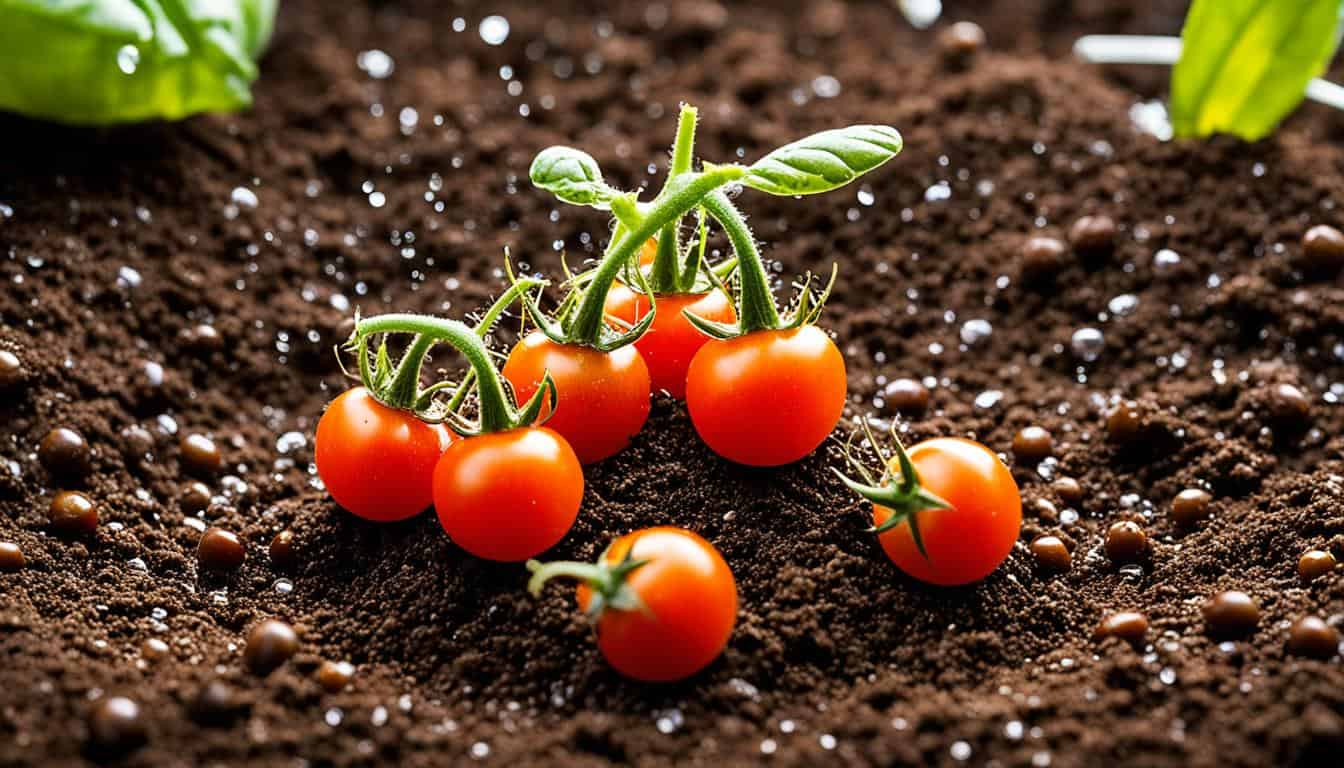
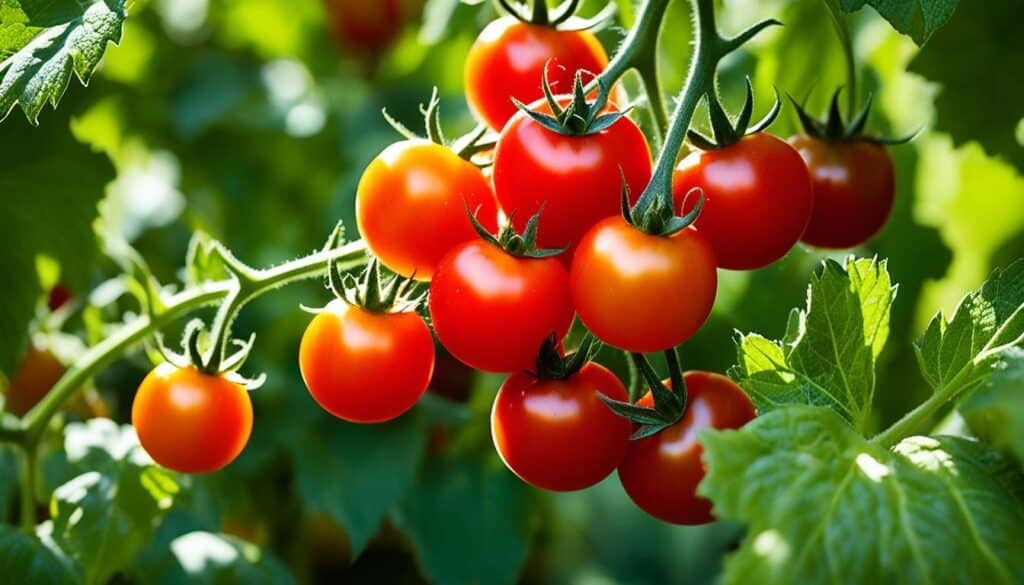
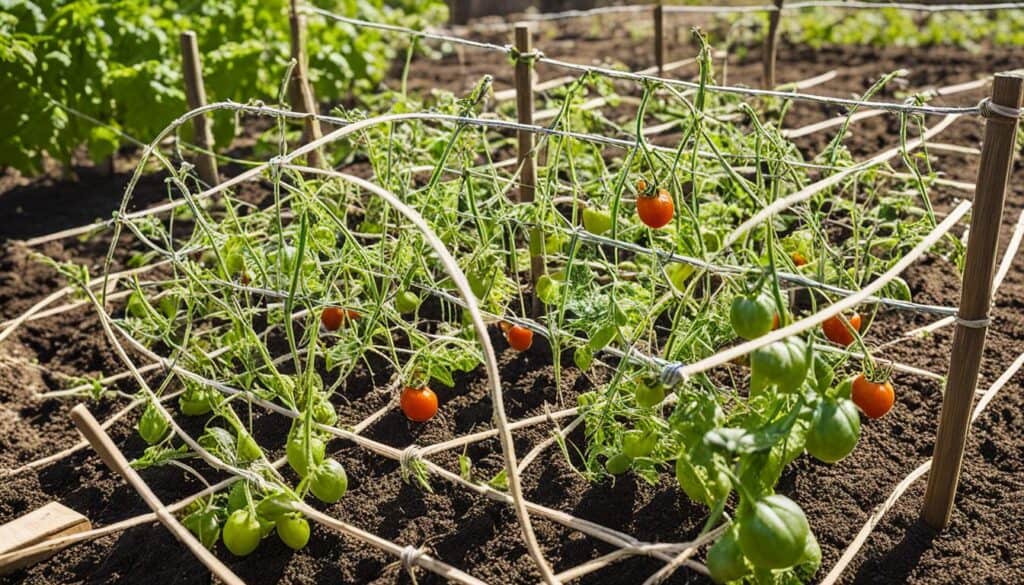
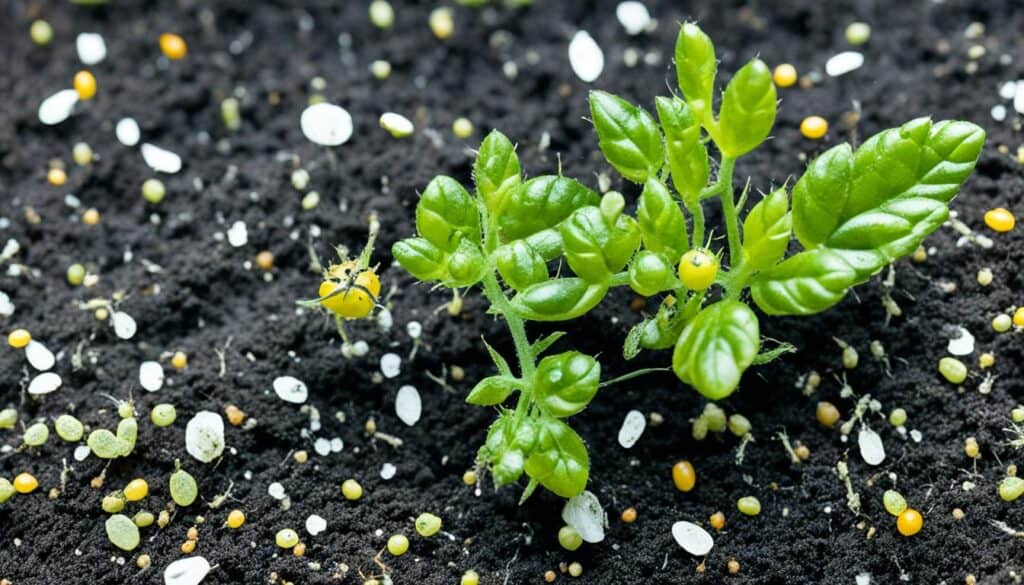
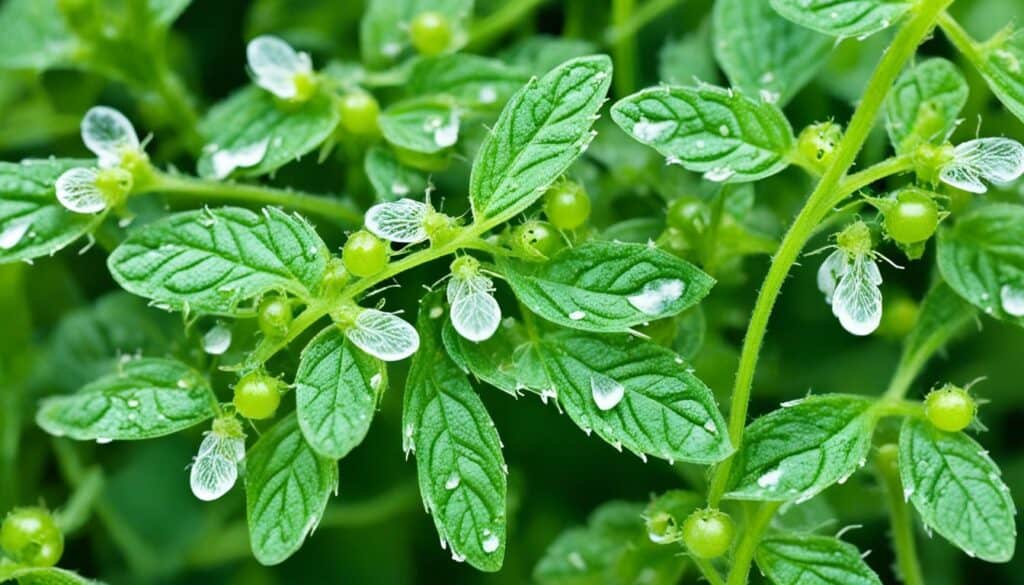
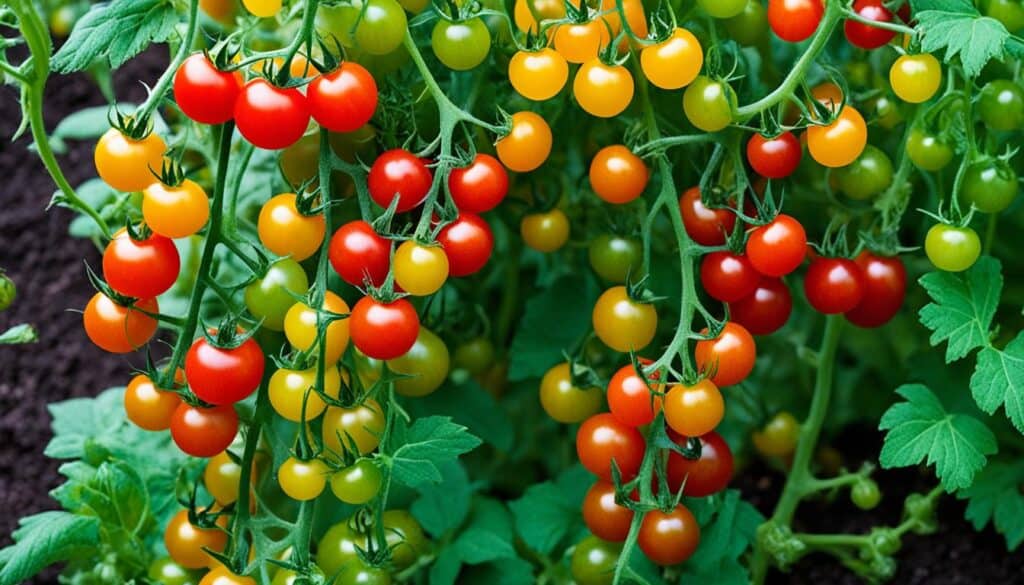

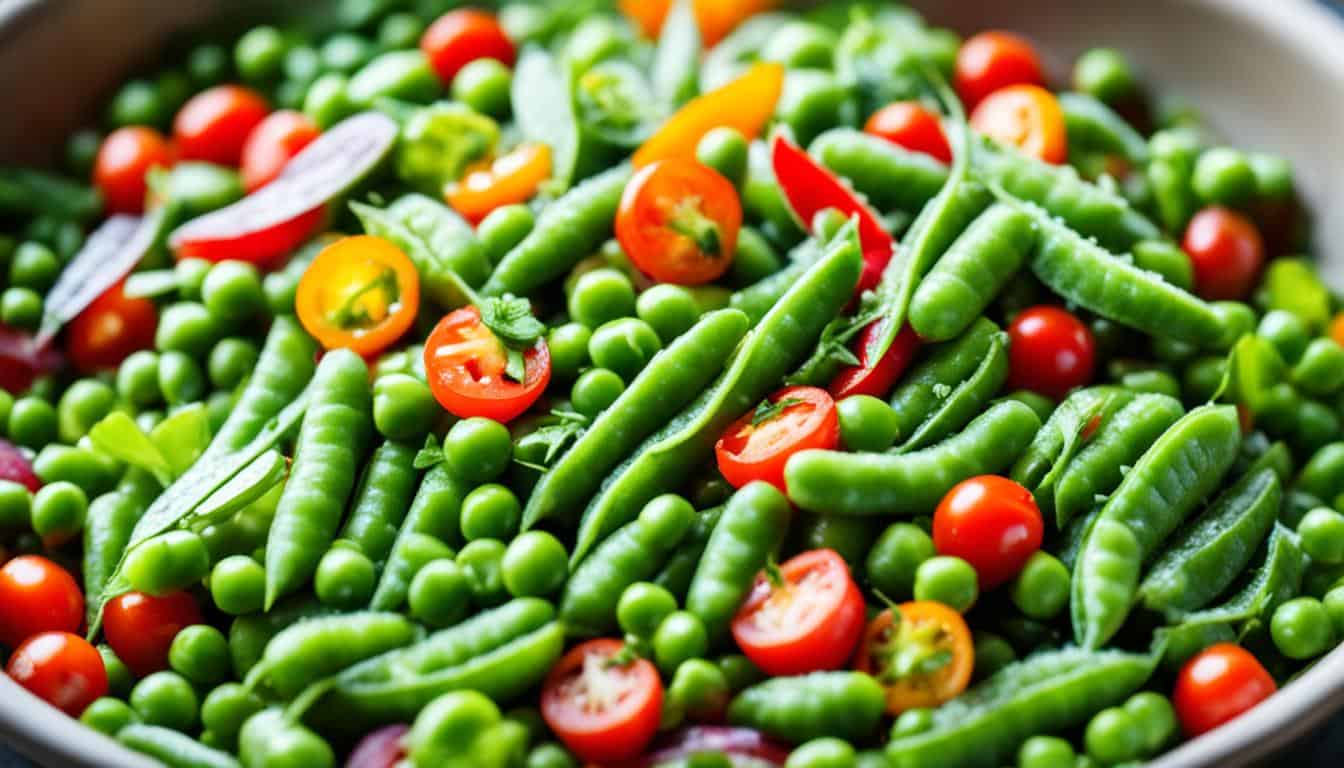
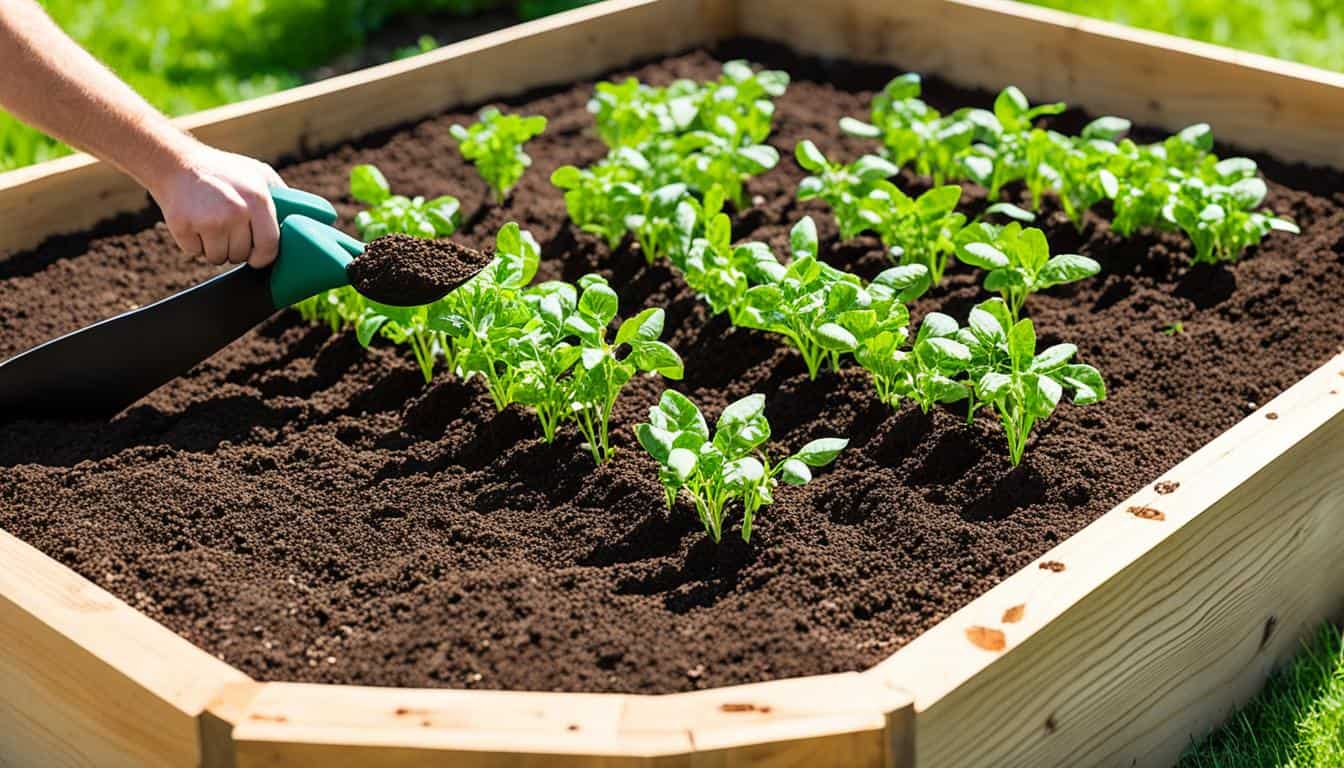
Leave a Reply